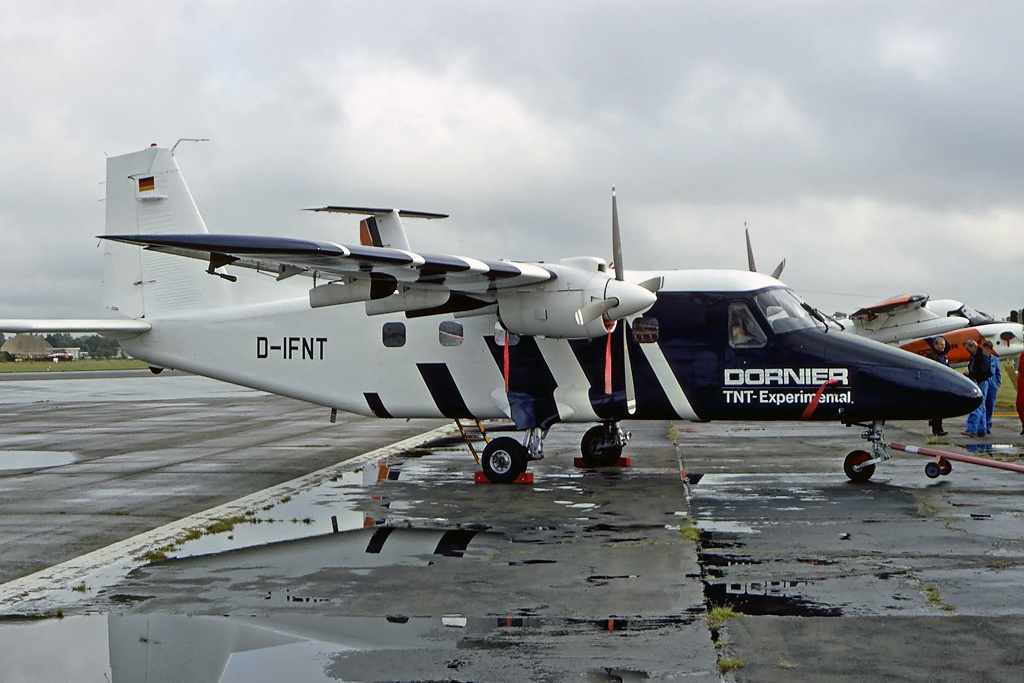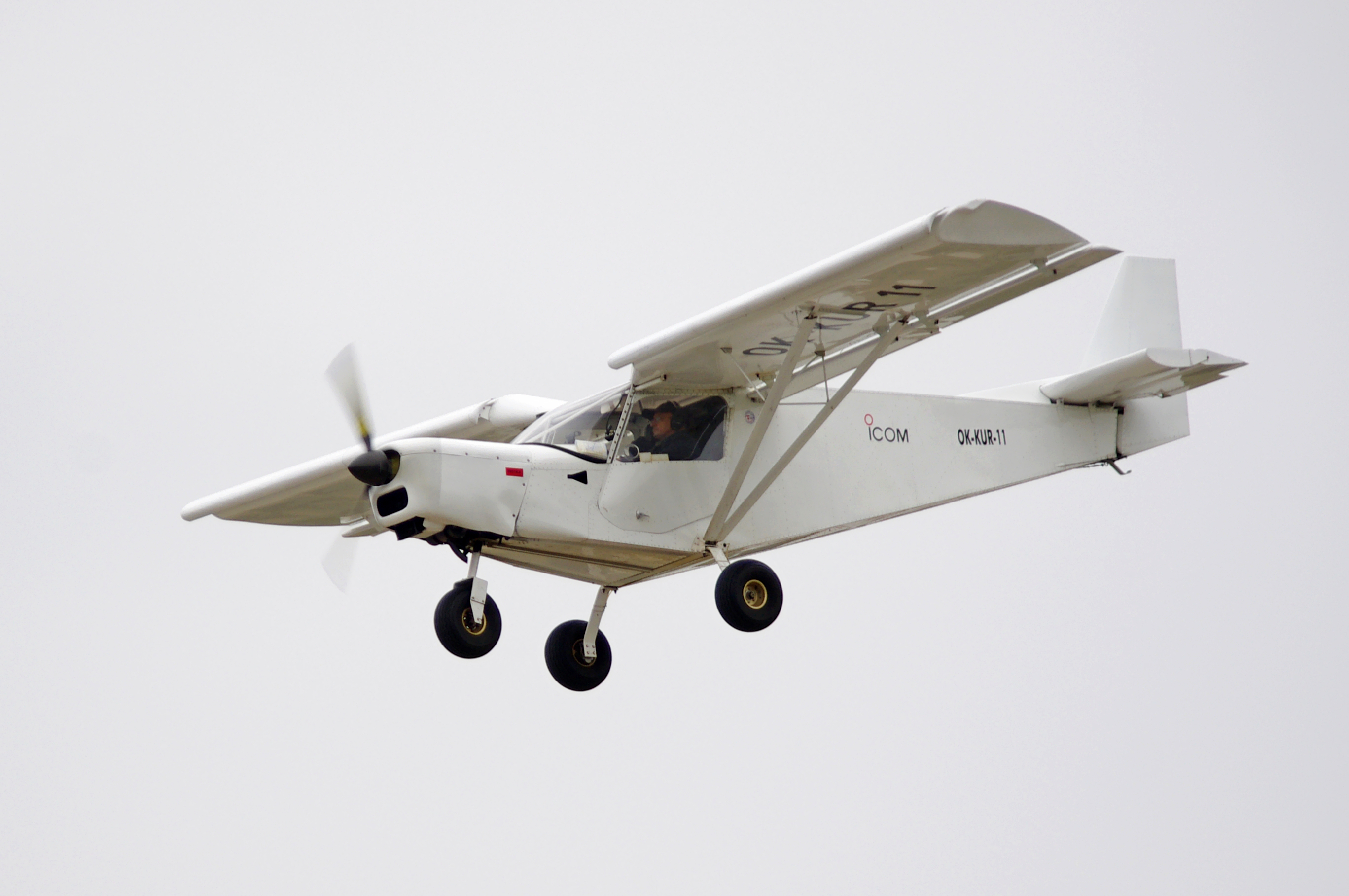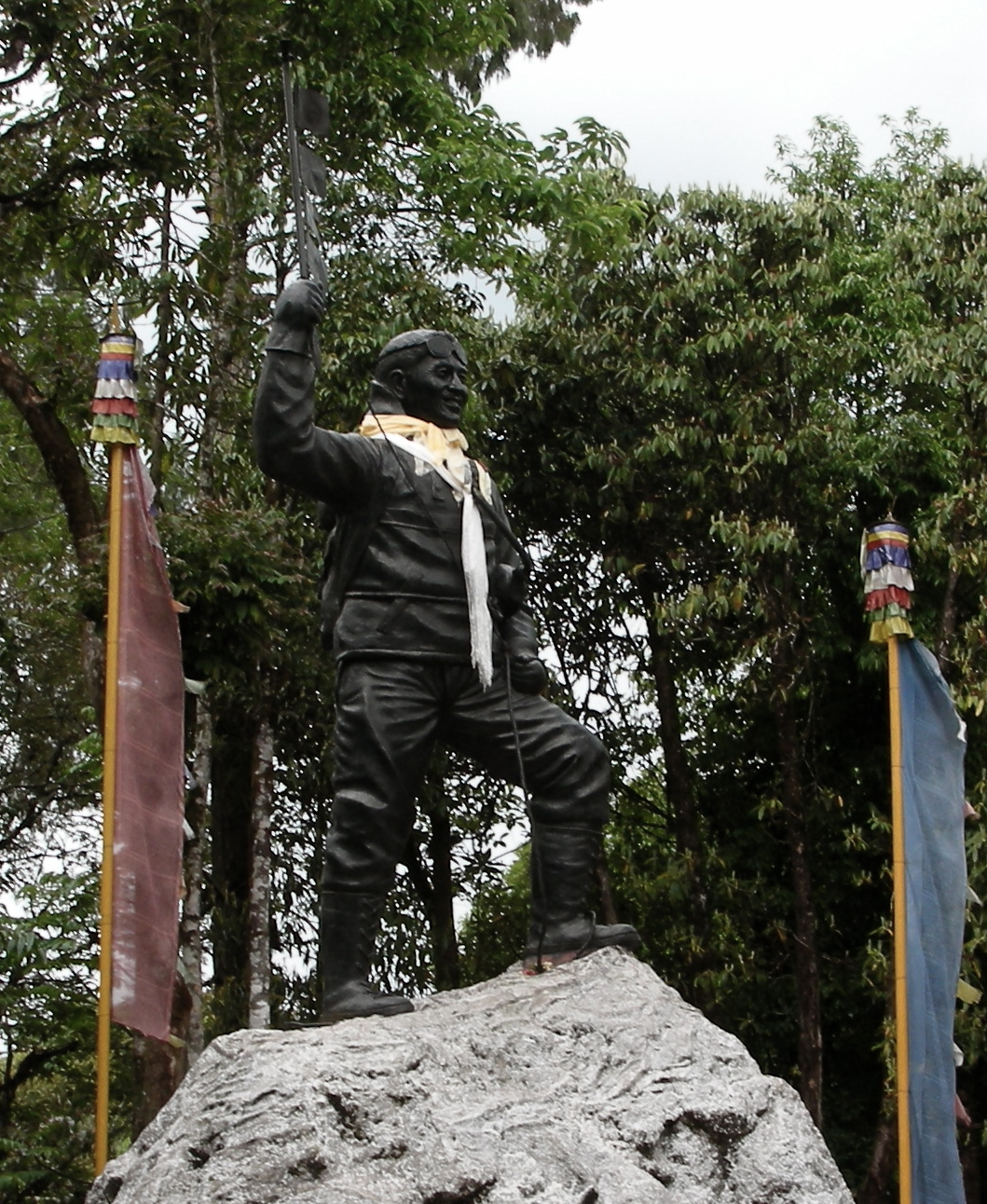|
Tenzing Hillary Airport
Tenzing-Hillary Airport , also known as Lukla Airport, is a domestic airport and altiport in the town of Lukla, in Khumbu Pasanglhamu, Solukhumbu District, Province No. 1 of Nepal. It gained worldwide fame as it was rated the most dangerous airport in the world for more than 20 years by a program titled ''Most Extreme Airports'', broadcast on The History Channel in 2010. The airport is popular because it is considered the starting point for treks towards Mount Everest Base Camp. There are daily flights between Lukla and Kathmandu during daylight hours in good weather. Although the flying distance is short, rain commonly occurs in Lukla while the sun is shining brightly in Kathmandu. High winds, cloud cover, and changing visibility often mean flights can be delayed or the airport closed. The airport is contained within a chain-link fence and for security is patrolled by the Nepali armed police or civil police around the clock. History The airport was built in 1964 ... [...More Info...] [...Related Items...] OR: [Wikipedia] [Google] [Baidu] |
Government Of Nepal
The Government of Nepal ( ne, नेपाल सरकार) is the federal executive authority of Nepal. Prior to the abolition of the Nepali monarchy in 2006 (became republic in 2008), it was officially known as His Majesty's Government. The head of state is the president and the prime minister holds the position of the head of executive. The role of president is largely ceremonial as the functioning of the government is managed entirely by the prime minister, who is appointed by the Parliament. The heads of constitutional bodies are appointed by the president on the recommendation of Constitutional Council, with the exception of the attorney general, who is appointed by the president on the recommendation of the prime minister. History Old Bharadari governmentship The character of government in Kingdom of Nepal was driven from consultative state organ of the previous Gorkha hill principality, known as Bharadar. These Bharadars were drawn from high caste and politically i ... [...More Info...] [...Related Items...] OR: [Wikipedia] [Google] [Baidu] |
Nepal Police
Nepal Police is the national and primary law enforcement agency of Nepal. It is primarily responsible for maintaining law and order, prevention of crime and crime investigation within the jurisdiction determined by the Constitution of Nepal. Apart from its primary role, Nepal Police conducts a vast array of duties such as VIP protection, Security of Vital Installations, Traffic management, Secret services, Intelligence collection, Riot Control, Disaster management, Hostage rescue and various other Ceremonial roles. Nepal Police is currently led by Inspector General of Police Dhiraj Pratap Singh since 3 May 2022. He is the 29th IGP of Nepal Police. History During The Rana Regime (1864–1951 AD) During Rana Regime, little was done to institutionalize the Police Organisation, establishing Milisiya, Thana police Chakki, office of Police director general etc. which gradually shaped The Nepal Police to this modern "Nepal Police". During the period 1951–1990 Nepal saw the dawn ... [...More Info...] [...Related Items...] OR: [Wikipedia] [Google] [Baidu] |
L-410 Turbolet
The Let L-410 Turbolet is a twin-engine short-range transport aircraft, manufactured by the Czech aircraft manufacturer Let Kunovice (named Aircraft Industries since 2005), often used as an airliner. The aircraft is capable of landing on short and unpaved runways and operating under extreme conditions from . By 2016, 1,200 L-410s had been built, and over 350 are in service in more than 50 countries. Development Development of the L-410 was started in the 1960s by the Czechoslovak aircraft manufacturer Let Kunovice. The Soviet airline Aeroflot was looking for a turboprop-powered replacement for the Antonov An-2 aircraft, initiating the design development by Let. After preliminary studies of an aircraft called the L-400, a new version was introduced called the L-410 Turbolet. The first prototype, designated XL-410, flew on April 16, 1969. Because of delays in the development of a suitable Czech engine (Walter M601), the prototype and first production version were powered by Pra ... [...More Info...] [...Related Items...] OR: [Wikipedia] [Google] [Baidu] |
Dornier 228
The Dornier 228 is a twin-turboprop STOL utility aircraft, designed and first manufactured by Dornier GmbH (later DASA Dornier, Fairchild-Dornier) from 1981 until 1998. Two hundred and forty-five were built in Oberpfaffenhofen, Germany. In 1983, Hindustan Aeronautics Limited (HAL) bought a production licence and manufactured another 125 aircraft in Kanpur, Uttar Pradesh, India. In July 2017, 63 aircraft were still in airline service. In 2009, RUAG started building a Dornier 228 New Generation in Germany. The fuselage, wings and tail unit are manufactured by Hindustan Aeronautics Limited (HAL) in Kanpur, India, and transported to Oberpfaffenhofen, where RUAG Aviation carries out aircraft final assembly. The Dornier 228NG use same airframe with improved technologies and performances, such as a new five-blade propeller, glass cockpit and longer range. The first delivery was made in September 2010 to a Japanese operator. In 2020, RUAG sold the Dornier 228 program to General Atomi ... [...More Info...] [...Related Items...] OR: [Wikipedia] [Google] [Baidu] |
De Havilland Canada DHC-6 Twin Otter
The de Havilland Canada DHC-6 Twin Otter is a Canadian STOL (Short Takeoff and Landing) utility aircraft developed by de Havilland Canada, which produced the aircraft from 1965 to 1988; Viking Air purchased the type certificate, then restarted production in 2008 before re-adopting the DHC name in 2022. The aircraft's fixed tricycle undercarriage, STOL capabilities, twin turboprop engines and high rate of Climb (aeronautics), climb have made it a successful commuter airliner, typically seating 18-20 passengers, as well as a cargo and medical evacuation aircraft. In addition, the Twin Otter has been popular with commercial skydiving operations, and is used by the United States Army Parachute Team and the United States Air Force's 98th Flying Training Squadron. Design and development Development of the aircraft began in 1964, with the first flight on May 20, 1965. A twin-engine replacement for the single-engine de Havilland Canada DHC-3 Otter, DHC-3 Otter retaining DHC's STOL ... [...More Info...] [...Related Items...] OR: [Wikipedia] [Google] [Baidu] |
STOL
A short takeoff and landing (STOL) aircraft is a conventional fixed-wing aircraft that has short runway requirements for takeoff and landing. Many STOL-designed aircraft also feature various arrangements for use on airstrips with harsh conditions (such as high altitude or ice). STOL aircraft, including those used in scheduled passenger airline operations, have also been operated from STOLport airfields which feature short runways. Design considerations Many fixed-wing STOL aircraft are bush planes, though some, like the de Havilland Canada Dash-7, are designed for use on prepared airstrips; likewise, many STOL aircraft are taildraggers, though there are exceptions like the PAC P-750 XSTOL, the Quest Kodiak, the de Havilland Canada DHC-6 Twin Otter and the Peterson 260SE. Autogyros also have STOL capability, needing a short ground roll to get airborne, but capable of a near-zero ground roll when landing. Runway length requirement is a function of the square of the minimum ... [...More Info...] [...Related Items...] OR: [Wikipedia] [Google] [Baidu] |
Helicopter
A helicopter is a type of rotorcraft in which lift and thrust are supplied by horizontally spinning rotors. This allows the helicopter to take off and land vertically, to hover, and to fly forward, backward and laterally. These attributes allow helicopters to be used in congested or isolated areas where fixed-wing aircraft and many forms of STOL (Short TakeOff and Landing) or STOVL (Short TakeOff and Vertical Landing) aircraft cannot perform without a runway. In 1942, the Sikorsky R-4 became the first helicopter to reach full-scale production.Munson 1968.Hirschberg, Michael J. and David K. Dailey"Sikorsky". ''US and Russian Helicopter Development in the 20th Century'', American Helicopter Society, International. 7 July 2000. Although most earlier designs used more than one main rotor, the configuration of a single main rotor accompanied by a vertical anti-torque tail rotor (i.e. unicopter, not to be confused with the single-blade monocopter) has become the most comm ... [...More Info...] [...Related Items...] OR: [Wikipedia] [Google] [Baidu] |
Asphalt Concrete
Asphalt concrete (commonly called asphalt, blacktop, or pavement in North America, and tarmac, bitumen macadam, or rolled asphalt in the United Kingdom and the Republic of Ireland) is a composite material commonly used to surface roads, parking lots, airports, and the core of embankment dams. Asphalt mixtures have been used in pavement construction since the beginning of the twentieth century. It consists of mineral aggregate bound together with asphalt, laid in layers, and compacted. The process was refined and enhanced by Belgian-American inventor Edward De Smedt. The terms ''asphalt'' (or ''asphaltic'') ''concrete'', ''bituminous asphalt concrete'', and ''bituminous mixture'' are typically used only in engineering and construction documents, which define concrete as any composite material composed of mineral aggregate adhered with a binder. The abbreviation, ''AC'', is sometimes used for ''asphalt concrete'' but can also denote ''asphalt content'' or ''asphalt cement'', ... [...More Info...] [...Related Items...] OR: [Wikipedia] [Google] [Baidu] |
Landing And Taking Off At The Most Dangerous Airport In The World
Landing is the last part of a flight, where a flying animal, aircraft, or spacecraft returns to the ground. When the flying object returns to water, the process is called alighting, although it is commonly called "landing", "touchdown" or "splashdown" as well. A normal aircraft flight would include several parts of flight including taxi, takeoff, climb, cruise, descent and landing. Aircraft Aircraft usually land at an airport on a firm runway or helicopter landing pad, generally constructed of asphalt concrete, concrete, gravel or grass. Aircraft equipped with pontoons (floatplane) or with a boat hull-shaped fuselage (a flying boat) are able to land on water. Aircraft also sometimes use skis to land on snow or ice. To land, the airspeed and the rate of descent are reduced such that the object descends at a low enough rate to allow for a gentle touch down. Landing is accomplished by slowing down and descending to the runway. This speed reduction is accomplished by reduc ... [...More Info...] [...Related Items...] OR: [Wikipedia] [Google] [Baidu] |
Mount Everest
Mount Everest (; Tibetan: ''Chomolungma'' ; ) is Earth's highest mountain above sea level, located in the Mahalangur Himal sub-range of the Himalayas. The China–Nepal border runs across its summit point. Its elevation (snow height) of was most recently established in 2020 by the Chinese and Nepali authorities. Mount Everest attracts many climbers, including highly experienced mountaineers. There are two main climbing routes, one approaching the summit from the southeast in Nepal (known as the "standard route") and the other from the north in Tibet. While not posing substantial technical climbing challenges on the standard route, Everest presents dangers such as altitude sickness, weather, and wind, as well as hazards from avalanches and the Khumbu Icefall. , over 300 people have died on Everest, many of whose bodies remain on the mountain. The first recorded efforts to reach Everest's summit were made by British mountaineers. As Nepal did not allow foreigners ... [...More Info...] [...Related Items...] OR: [Wikipedia] [Google] [Baidu] |
Tenzing Norgay
Tenzing Norgay (; ''tendzin norgyé''; perhaps 29 May 1914 – 9 May 1986), born Namgyal Wangdi, and also referred to as Sherpa Tenzing, was a Nepali-Indian Sherpa mountaineer. He was one of the first two people known to reach the summit of Mount Everest, which he accomplished with Edmund Hillary on 29 May 1953. ''Time'' named Norgay one of the 100 most influential people of the 20th century. Early life There are conflicting accounts of Tenzing's early life. In his autobiography, he wrote that he was a Sherpa born and raised in Tengboche, Khumbu, in northeastern Nepal.Tenzing & Ullman In a 1985 interview with All India Radio, he said his parents came from Tibet, but that he was born in Nepal. According to many later accounts, including a book co-written by his son Jamling Tenzin Norgay, he was born in Tibet, at Tse Chu in the Kama Valley, and grew up in Thame. He spent his early childhood in Kharta, near the north of the country. Norgay went to Nepal as a child to ... [...More Info...] [...Related Items...] OR: [Wikipedia] [Google] [Baidu] |

.jpg)

.jpg)





